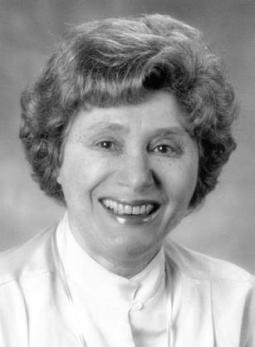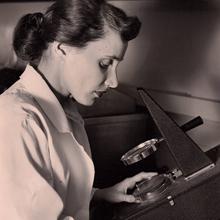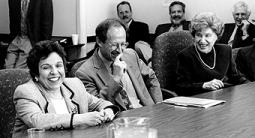Polio Place
A service of Post-Polio Health International
Ruth L. Kirschstein, MD
Born: October 12, 1926
Died: October 6, 2009
Major Contribution:
Ruth L. Kirschstein, MD was a pathologist and a science administrator. In 1974, she became the first woman to be appointed director of an Institute at the National Institutes of Health (NIH), ie, the National Institute of General Medical Sciences. Her career spanned more than half a century. After the Cutter Incident of 1955, Ruth played a prominent role in firmly leading the effort to ensure the polio vaccine’s safety of both the killed (injection) and the live attenuated (oral) polio types. For American companies, every single lot of polio vaccine had to be tested for safety using her test before it could be cleared for public use.
The Cutter Incident
In 1955, a Berkeley, California pharmaceutical company, The Cutter Laboratories, prepared several batches of recently approved Jonas Salk polio vaccine and inadvertently mixed live poliovirus with its vaccine doses. The result was a national tragedy. Paul Offit, MD, in The Cutter Incident reports that 220,000 people were infected with the live polio virus from Cutter, 70,000 developed muscle weakness, 164 were severely paralyzed and 10 were killed. 75% were paralyzed for the rest of their lives.
Kirschstein helped develop and refine tests to assure the safety of viral vaccines for measles and rubella. She also helped organize the NIH response to the AIDS epidemic and championed the Women’s Health Initiative.
Other Information:
Brief Biography: Born in Brooklyn, New York, Ruth Kirschstein “wanted to be a doctor from a very young age—even before I went to high school,” she once told oral historians at the National Library of Medicine. “I’m not sure exactly what motivated me. I had a father who was a chemist. I had a mother who was extremely ill through most of my childhood and spent a long time in the hospital. That [may have] motivated me partly as well.”
Although trained as a classical pianist, she pursued medicine, graduating in 1947 from Long Island University, and in 1951, attained a medical degree from Tulane University, New Orleans, Louisiana. She interned in medicine and surgery at Kings County Hospital, Brooklyn, and completed medical residencies in pathology at Providence Hospital in Detroit, Tulane University Hospital and the Clinical Center at the National Institutes of Health (NIH). She received honorary degrees from the University of Rochester School of Medicine, Long Island University, Atlanta University, Medical College of Ohio, and Mount Sinai School of Medicine.
In 1956, the World Health Organization enlisted Dr. Kirschtein's help on their Expert Group on International Requirements for Biological Substances, and in 1967, as a consultant on the use of the live poliovirus oral vaccine.
From 1957 to 1972, Kirschstein worked in experimental pathology at the NIH Division of Biologics Standards, (now the Center for Biologics Evaluation and Research of the Food and Drug Administration). She served as director of the National Institute of General Medical Sciences, deputy director of NIH in the 1990s, and acting director of the NIH in 1993 and 2000-2002. She was a fellow of the American Academy of Arts & Sciences and a member of the Institute of Medicine.
Dr. Kirschstein died in 2009, leaving an indelible impression on the careers of countless researchers she worked with over her long career in science. She was married to Dr. Alan S. Rabson, of Bethesda, a pathologist and a deputy director of the National Cancer Institute.
In 2011, NIH published Always There: The Remarkable Life of Ruth Kirschstein, MD by Alison F. Davis, PhD (download). A filmed interview with Dr. Kirschstein can be viewed here.
May 2013/Carol K. Elliott




















































